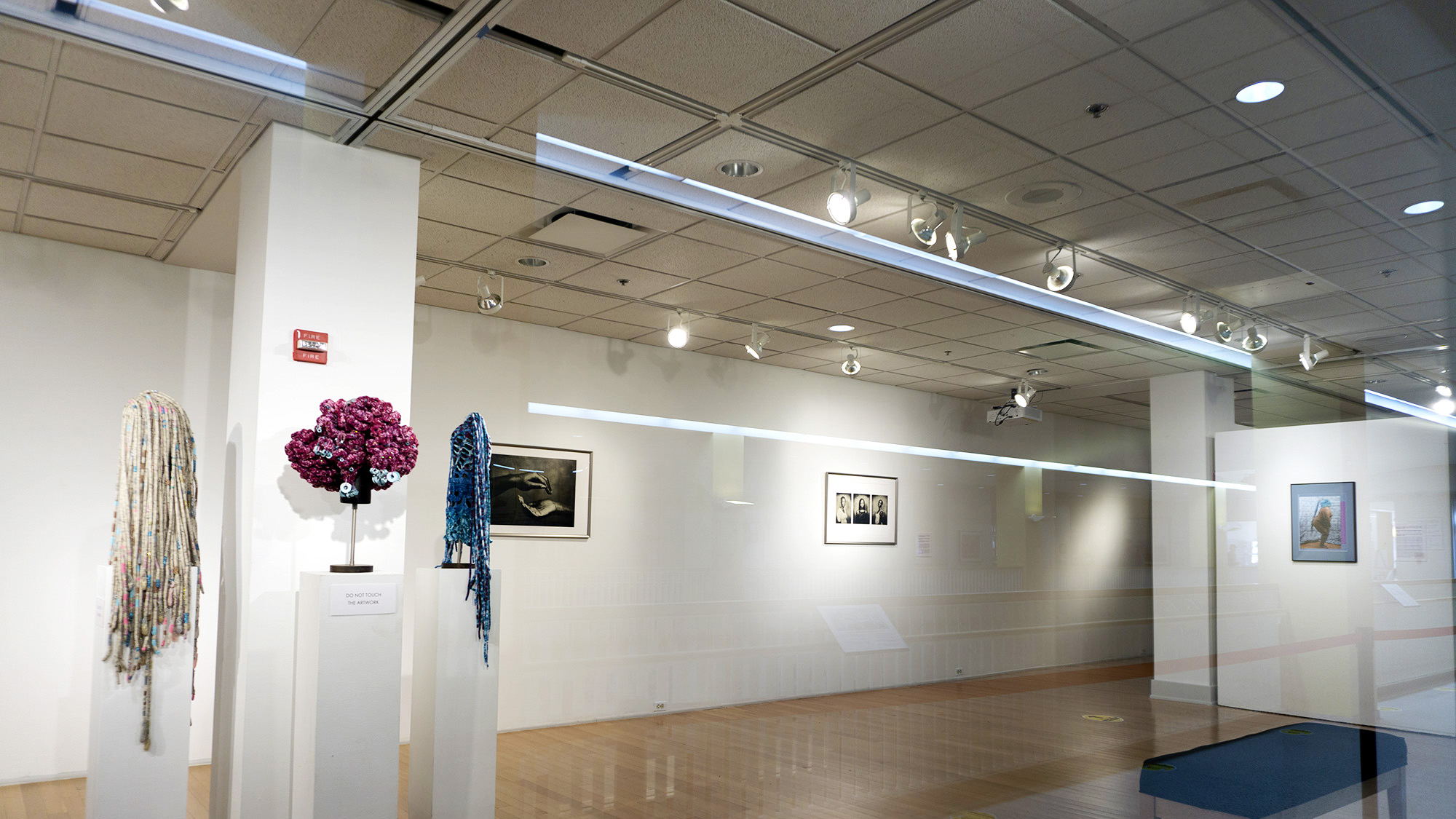Sadia Alao wishes people would stop referring to Black women as “strong” — and her piercing words come out in her poetry film “Black Girl Bitter.”
“Maybe this strong Black woman is tired of being a strong Black woman. Maybe she just wants to be just woman, just Black, no other adjectives attached,” Alao says during the poem.
Alao is one of three Black artists featured at the exhibit “In Focus: Representations of Black Womanhood” at the University of Maryland’s Stamp Student Union. The exhibit launched Feb. 8 and will run through March 27.
The exhibit seeks to elevate Black voices, specifically Black female-identifying or nonbinary people, curator Brianna Nuñez said.
“Quite often, they are the ones who are at that sweet intersection of not being male and not being Caucasian, and they are often left out of the discourse,” the history and library and information science graduate student said.
Based on Alao’s own experience with depression and anxiety, “Black Girl Bitter” lets others know they are not alone, especially in Black households where mental health issues are often treated as taboo, she said.
After she released the film last year, people of all backgrounds reached out to her about “how they felt seen in it,” she said. Too often, Alao says, Black women are characterized as strong when they are so much more than that.
“When I was younger, I used to think this was such a great compliment … but then I realized you’re asking us to carry the weight of the world on our back,” said Alao, who graduated in December with a degree in marketing and theatre. “We don’t want to be strong. We just want to live our lives.”
[USM presidents address lack of trust in COVID vaccine due to history of medical racism]
The exhibit also features pieces from textile artist André Terrel Jackson from New Jersey and photographer Akea Brionne Brown of Baltimore.
Jackson contributed three headpieces of their “Body Study Ego” series to the exhibit. The pieces are “celebrations of Black womanhood,” Jackson said.
“A lot of the recent conversations about natural hair have focused on kind of tackling Eurocentric standards of beauty that definitely disproportionately affect Black women specifically,” they said. “And I think Black men benefit from the work that Black women and femmes do to kind of combat that and redefine beauty on their own terms.”
The sculptures also feature poetry relating to Jackson’s experiences navigating the world through the lens of all of their intersecting identities: queer, Black and nonbinary.
Jackson’s self-portraits are also included in the exhibit. Since Jackson’s art comes from a place of self-reflection, they hope viewers will do the same in their own lives.
“On the first level, I am really interested in celebrating my identities and celebrating identities at the margins,” they said. “On a secondary level, I’m hoping that audiences will do a bit more self-reflection.”
Brown’s photographs in the exhibit come from her “An Archive of Her/Our Own” collection, according to Maryland Today. Her website states her work “investigates the implications of historical racial and social structures in relation to the development of contemporary black life and identity within America.”
Nuñez also emphasized that although the exhibit showcases Black womanhood, not all Black women are the same.
“The way we carry our Blackness, our womanhood, our identity, is not all interchangeable,” she said. “Black women so often are generalized as Black women that it’s forgotten that they’re individual people as well.”
“In Focus” is on display at Stamp Gallery until March 27. The pieces are also available online: “Black Girl Bitter” is on YouTube, “Body Study Ego” is on Jackson’s website and “An Archive of Her/Our Own” is on Brown’s website.



